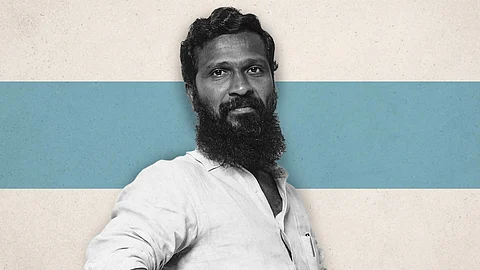
- Reviews
- Power List 2024
- Cannes 2024
- In-Depth Stories
- Web Stories
- News
- FC Lists
- Interviews
- Features
- FC SpecialsFC Specials

Vetri Maaran began the year in Tamil cinema with his rustic and unapologetically political film Viduthalai - Part 1. The film featured Soori in his first lead role and also starred Vijay Sethupathi in an extended cameo. Co-written by Jeyamohan, the film follows the story of a newly-joined police officer who increasingly becomes disillusioned by the system as he sees the atrocities being committed against the local tribespeople.
“I wanted to make a film with Soori in the lead,” the director told Anupama Chopra in Film Companion's Directors Adda 2023, “He is an actor who has done comedic roles for the past ten years. So I had my doubts about doing a film with him as a lead in a serious film.”
The filmmaker has often spoken about his process, which involves little to no planning and changes in the script throughout. The filming of Viduthalai, too, began with a plan to finish it in thirty five days, much like Vetri Maaran's Oscar-contender Visaranai. However, it eventually led to a 120-day shoot that cost over ₹65 crores with the added decision of releasing it in two parts.
“With the initial plan, we went to the location and I realised that we could only finish ten percent of the film in twenty days,” he said. “We had spent seventy percent of the budget already. We faced difficulties such as a lack of proper resources at the location and storms damaging our set. So I called up the producer and asked him if we could work on something else. He encouraged me to pursue this idea as we had already spent a lot of money on the film.”
One of the highlights of the film is its spectacular opening sequence, which shows a train accident that has occurred due to a bombing by the rebels in the area. The sequence is presented in a single ten-minute shot with no cuts in between. The director mentioned that the set of the accident spot took three months to construct and that the team had weeks of rehearsals.
“I choose to do a long take when I don’t know where to cut a shot. While planning, I initially thought we could start with the ambulance and then move to the hurt boy, and then cut to the details. However, when we cut to a close-up, the details are emphasised. I felt it would be better if we left some of the details to the imagination of the audience. There are details and characters that we created, but we just pass through it and it stays in your mind.”
Post the COVID-19 lockdown, there has been an increase in theatrical footfalls and many call it the golden age of theatrical exhibition. The director added that he's enjoying the space he's at at the moment.
“I am a mainstream filmmaker but I don’t make conventionally mainstream films. For producers to invest in my process the way they do, it is because of the audiences. I feel it is because, in Tamil, we have had this tradition of voicing out the common man’s issues and political expression. So, when we address these things in films, it gets appreciated. This concept is catching on with the rest of the Indian film space today.”
Watch the full conversation here: